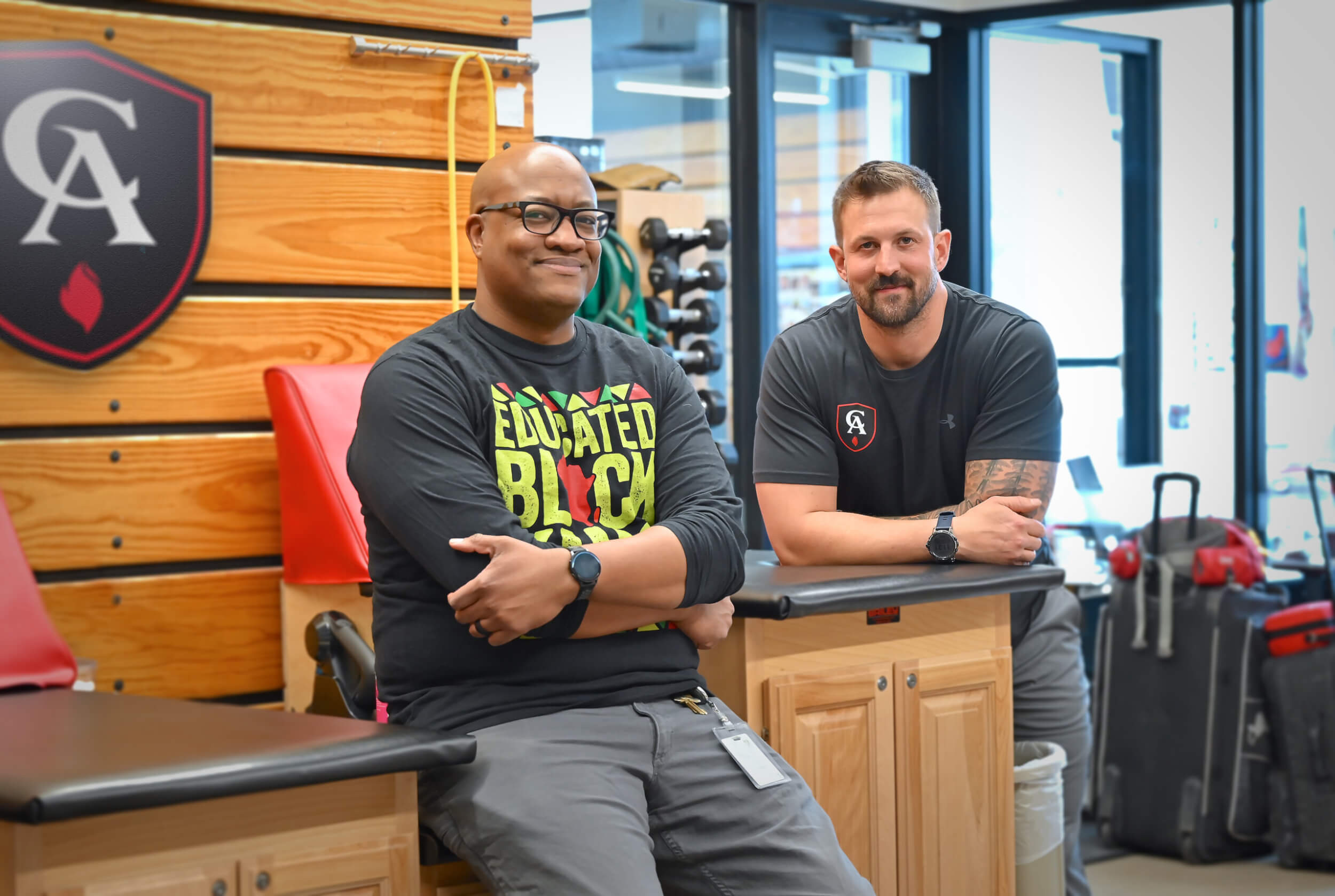Just a few years after its debut, the Strength and Conditioning program at Colorado Academy is nearly bursting at the seams. “It’s a good problem to have,” says the school’s Director of Sports Performance, Wes Kirk, who came to CA in 2019 specifically to build this program where no formal one had existed before—despite CA’s long history of success in state high school sports.
It took the completion that same year of a new Athletic Center—a state-of-the-art, 66,000-square-foot facility with Field House, locker rooms, coaches’ offices, Climbing Center, competition and practice gyms, team rooms, and a dedicated Strength and Conditioning and Sports Medicine Center—to bring the discipline of sports performance fully into the fold of the larger Athletic and P.E./Kinesiology programs, which serve all 1,000-plus CA students.
In that first trimester on campus, Kirk worked with fewer than a dozen student-athletes, but today, he and his sports medicine colleagues Dr. Rich Griswold, CA’s longtime Athletic Trainer, and Rory Grady, Associate Athletic Trainer, serve hundreds of Middle and Upper School athletes year-round across 16 Varsity-level CHSAA-sanctioned sports, numerous other high school teams such as Climbing and Ultimate Frisbee, and competitive Seventh and Eighth Grade sports including soccer, basketball, and lacrosse.
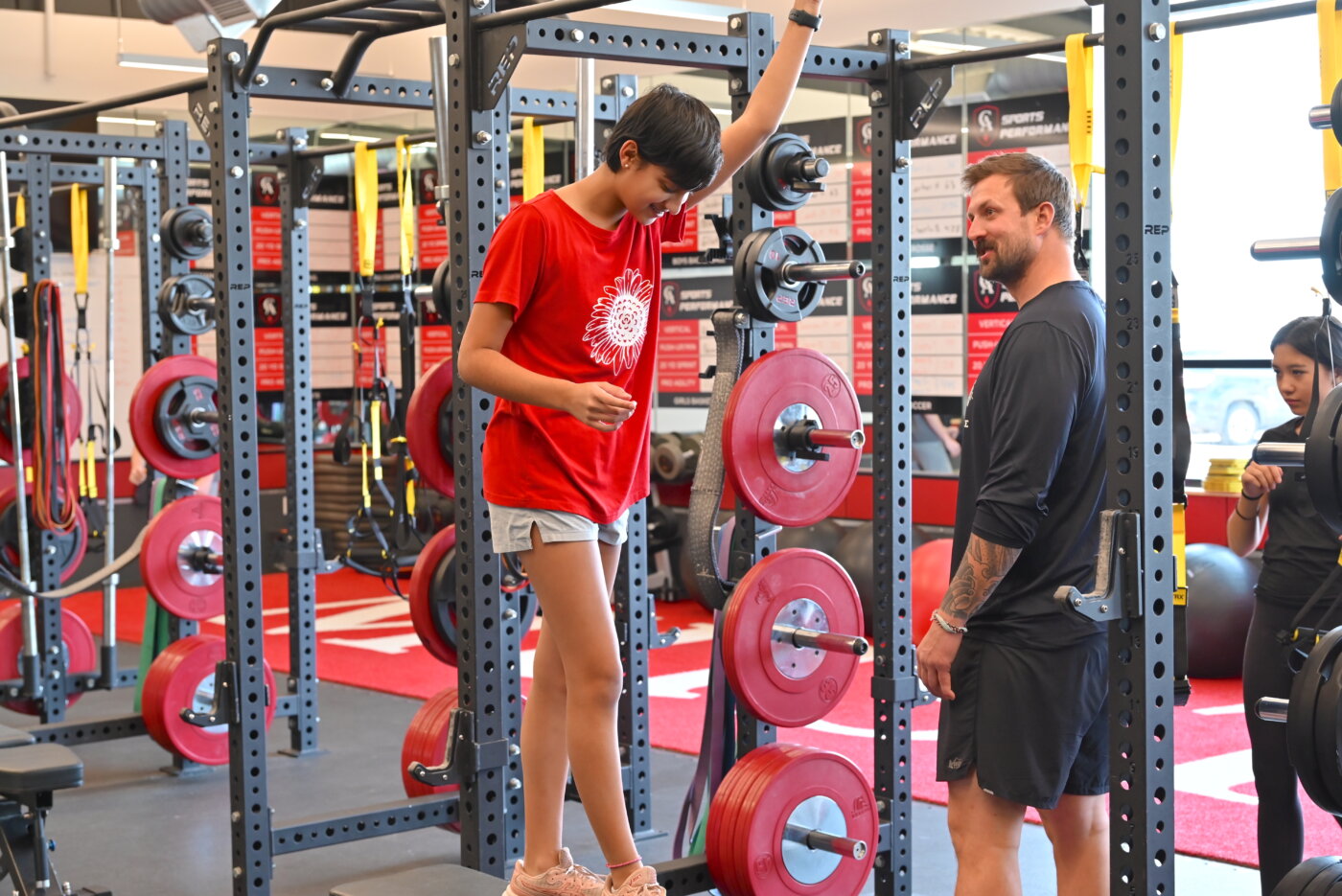
A Certified Strength and Conditioning Specialist, Kirk brings to CA a long track record that includes two years at the University of Oklahoma for Olympic Sports Strength and Conditioning and stints with the Cincinnati Reds’ Triple A team, Florida State University, and the University of Arizona, as well as an MEd from the University of Oklahoma with a focus on Intercollegiate Athletic Administration.
If there’s one thing he carries with him from those years of experience with top athletes at the collegiate and professional levels, it’s the knowledge that the weight room can be one of the most intimidating spaces many will ever enter. “The fitness industry is a confusing, muddy, judgmental place,” he acknowledges. “We’ve all gone through it. So helping kids feel confident in their abilities and comfortable and safe in this space is at the top of my job description.”
Dialing in movement
With every one of his athletes, whether a Seventh Grader just picking up a sport for the first time or a Junior or Senior looking to play for a Division I college program, the job always begins with what Kirk knows to be essential: “If you can’t move well, you shouldn’t move heavy.”
In other words, he explains, he starts all his athletes at the lowest possible resistance level, emphasizing competency and consistency of movement. “Once they can move well, those kids who show up consistently and work hard to clean up their form can tolerate higher loads as they get a little older. This year, the Seventh and Eighth Graders who I started with when I first came to CA are some of our strongest Upper School athletes. They may not look like the biggest kids on campus, but their movement patterns are second to none.”
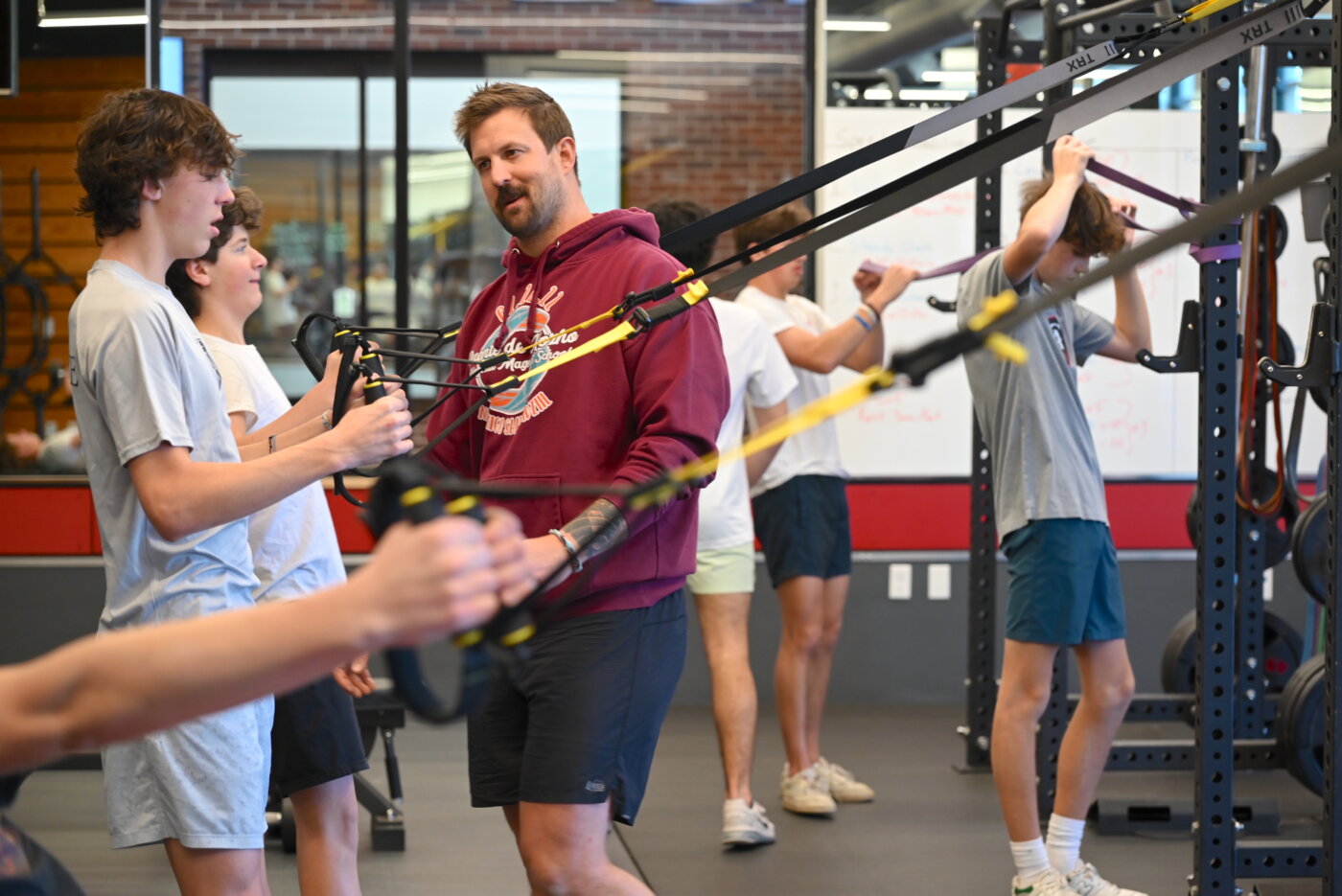
That philosophy—that bigger doesn’t always mean better—goes hand in hand with another truth Kirk absorbed along the way: If kids aren’t having fun, they probably won’t be back. Students get to choose the music that plays on the Strength and Conditioning Center’s massive sound system, and, Kirk adds, competitors have to share words of praise for each other’s efforts, no matter who may be in the room.
“I’ll have a kid who’s going on to play collegiate sports working out with a younger student who’s never handled weights—completely different backgrounds, completely different individuals. But they still have to acknowledge each other. The goal is always the same: access, opportunity, committing to your goals, and doing the right thing.”
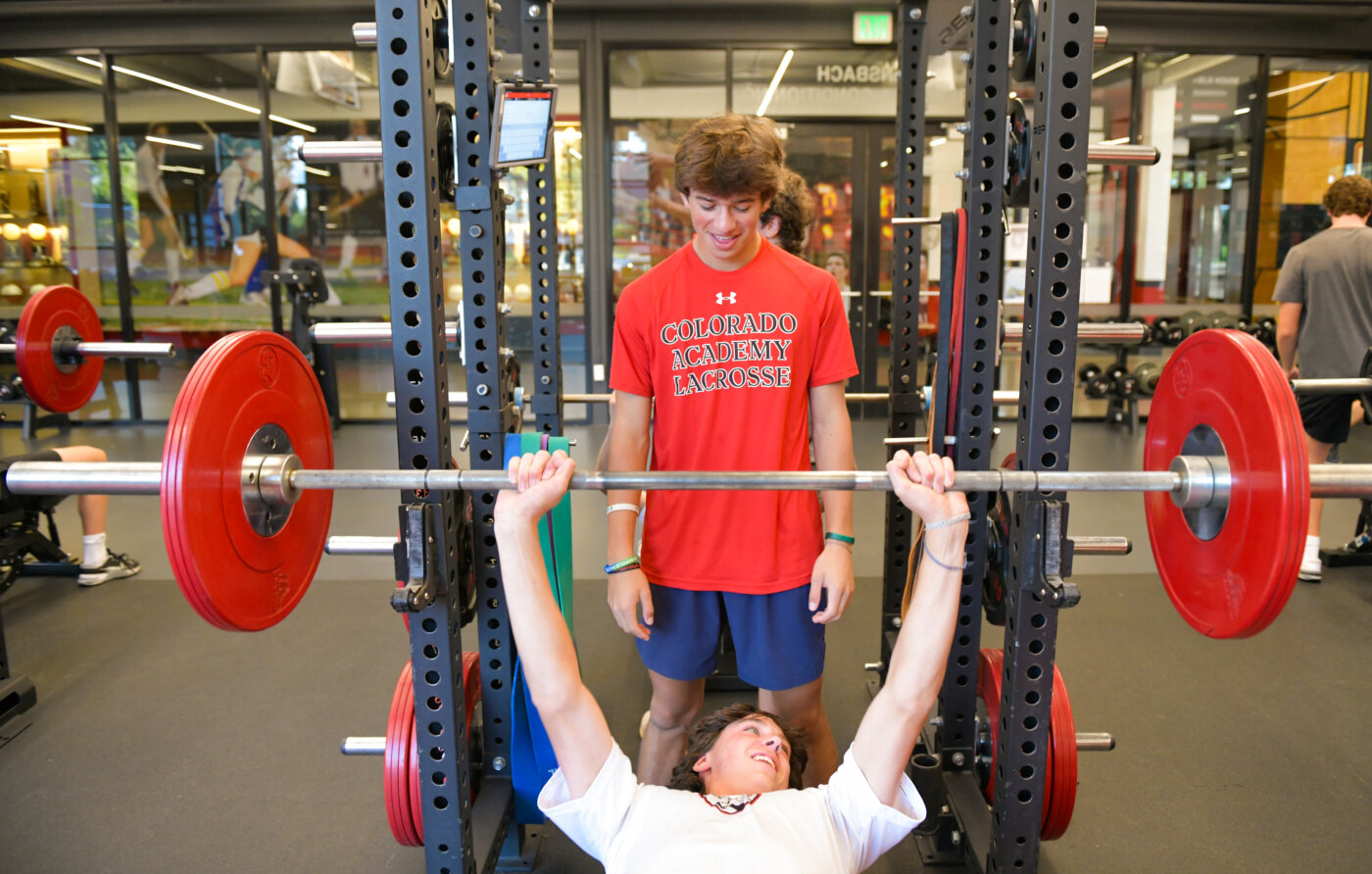
Across the board, Kirk’s approach to strength, conditioning, and injury reduction emphasizes the whole athlete. “A lot of our kids play multiple sports throughout the year, so they’re going to get the same movement pattern training whether they’re in hockey or lacrosse.”
Fundamentally, he says, what matters most in every sport is “Can you bend, can you hinge? Can you press laterally, can you rotate? Can you pull vertically, horizontally? Everybody has to work on acceleration and deceleration; everybody has to work on change of direction. We look at the whole scope of movement and then develop strength within those boundaries.”
Teaching the fundamentals
That broad focus aligns tightly with the philosophy of CA’s P.E./Kinesiology and Athletic programs, which place a premium on movement fundamentals starting in elementary school. “One of the things that attracted me to CA five years ago was the ability to work with kids from Second Grade up,” Kirk recounts, “and have a contributing voice into what they should be taught. The students who go through our Lower and Middle School programs are the ones who in Upper School can skip, balance, jump rope—the timing and movement basics are established early on.”
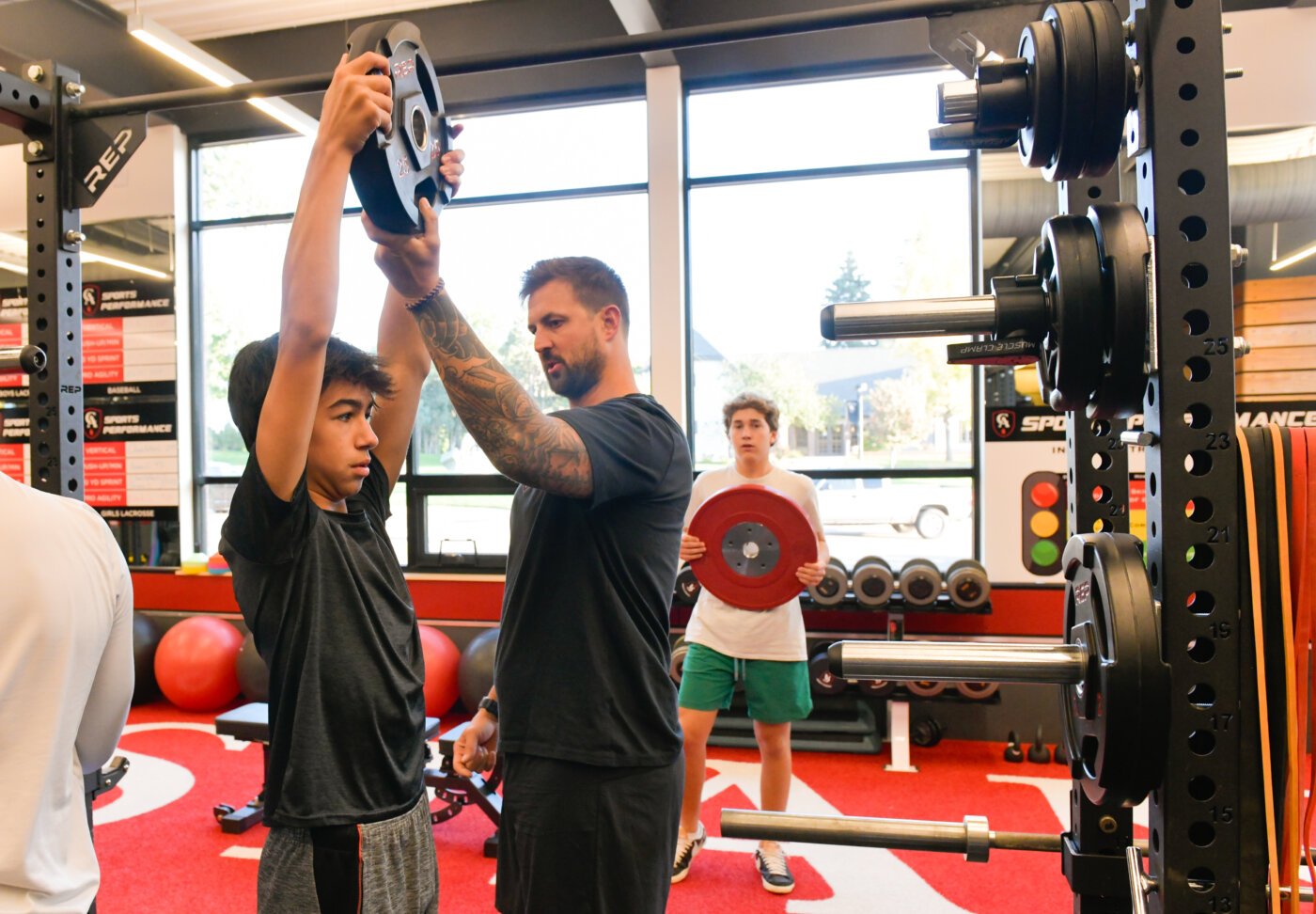
When Kirk works with student-athletes closer to the end of their CA careers, he often finds himself educating kids and their families about what sports look like at the college level and beyond.
“It’s similar to the academic side,” he explains. “Our teachers do an amazing job of preparing our Upper School students for the rigors of college. I’m trying to do the same thing on the sports and fitness side,” helping them navigate the recruiting process and painting a realistic picture of the demands that college and professional athletes must shoulder when they leave CA’s “safety net.”
Kirk continues, “Everyone here at CA has their medium: One teacher’s might be photography, another’s literature. My medium happens to be the weight room—a bunch of metal and equipment. But we’re all working toward the same goal: sending our kids off into the world knowing the difference between right and wrong, being able to advocate for themselves. I wouldn’t say I’m doing anything special in the Sports Performance Center; everyone at CA is doing something special for students.”
From healing to teaching
Special things happen in the Sports Medicine facility next door, too. On any given day, Griswold and Grady can be found tending to Middle and Upper School athletes with a slew of concerns—from aches and strains to chronic pain stemming from intense competition outside of school hours. They love when they get to reassure students that they’re good to play on; at the same time they take seriously their role in educating young people about their bodies and health and encouraging them to sit out if it’s the right thing to do.
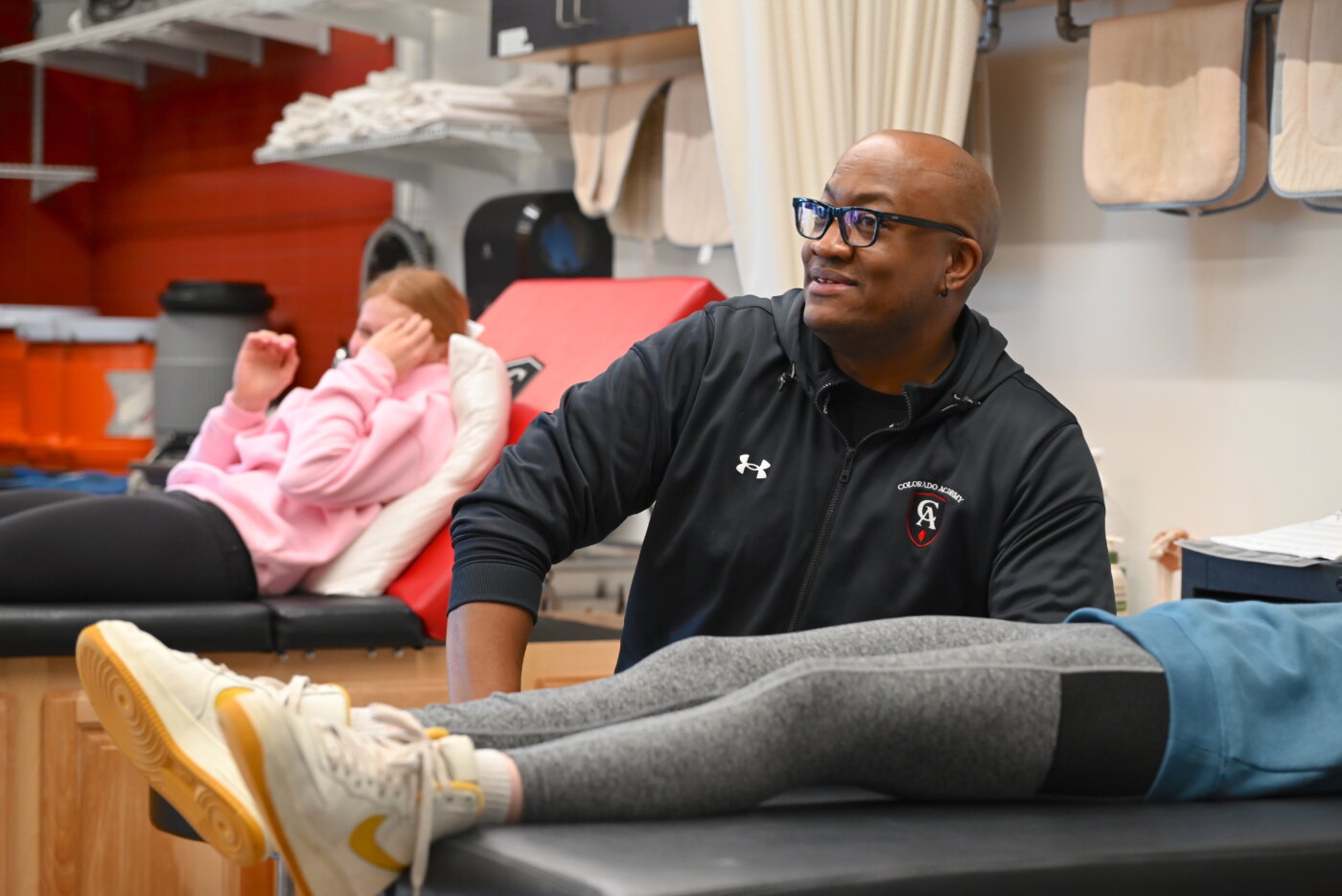
“First of all, I want you to be healthy enough to do the activities of daily life—walking up and down stairs, carrying a backpack,” Grady explains. “Then I want to help you perform optimally on the field. That’s where Wes’s work and mine meet: He focuses on improving performance, and I want to make sure you can hit that high level of performance day after day.”
With a master’s degree in physical education as well as a four-year certification in sports medicine, Grady explains that Athletic Trainers are in some ways the “Swiss-Army knife” of general medicine. They’re often the first responders to incidents on the field, as in the case of the Buffalo Bills’ Damar Hamlin, who suffered cardiac arrest after a play during a televised football game. It was the team’s Athletic Trainers, Grady notes, who were first at Hamlin’s side and helped to save his life.
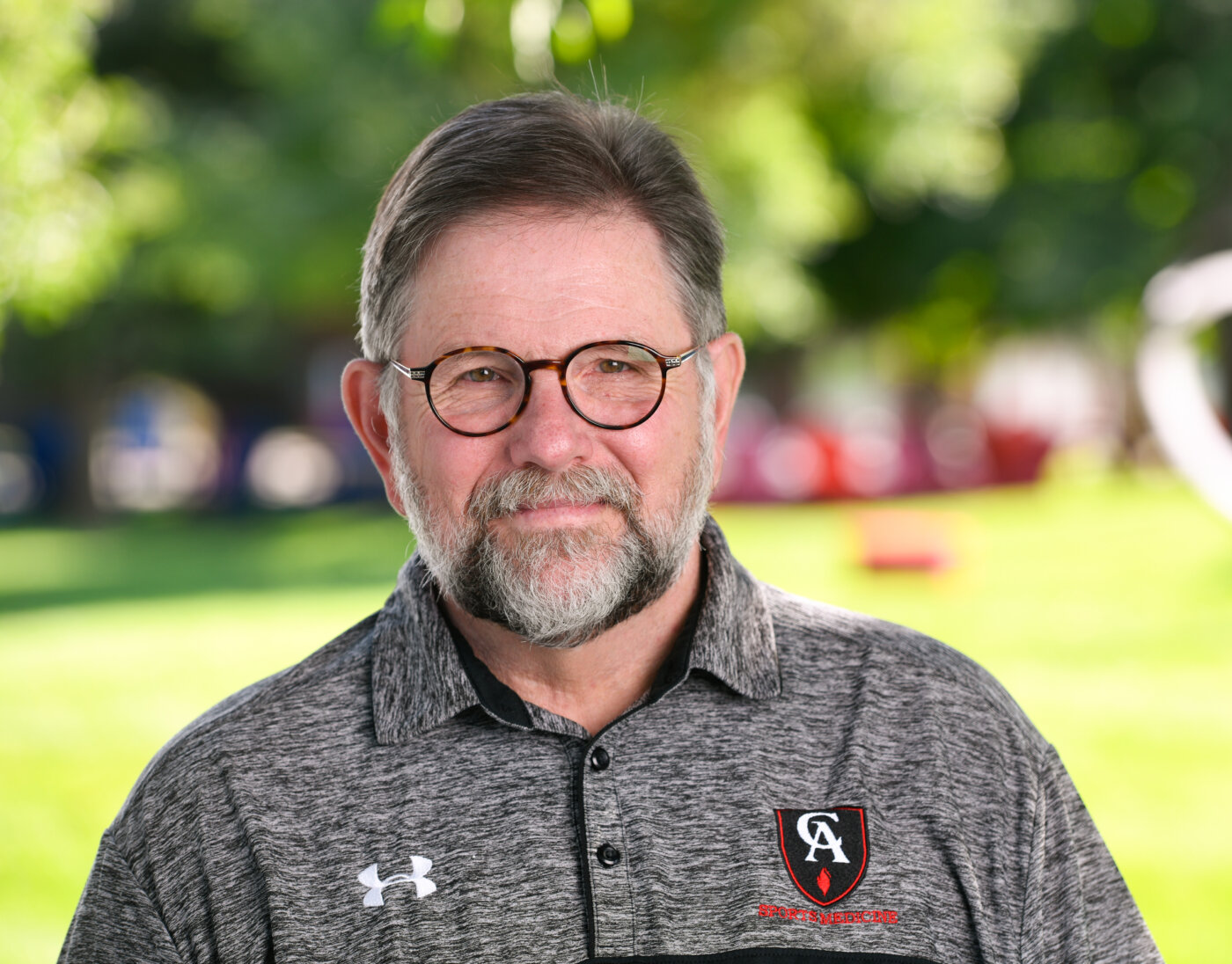
“People are starting to realize that Athletic Trainers don’t just tape ankles,” says Grady. With a full four years of clinical rotation required before they can earn their certification, they bring an extensive background in medicine to every situation.
In most cases at CA, he goes on, that means diagnosing and developing rehab plans for students who present with what are known as “overuse injuries.” “This generation of students is sometimes too active: They play three sports at a time—one at school and one or two more at the club level—but their bodies are still developing, and they’re still learning about the importance of recovery. So what might have just been ‘growing pains’ can turn into something more serious.”
And general physicians, Grady elaborates, sometimes view these players through a lens that may not be informed by years of working with athletes. “I use my training in physical education every day in treating my patients. I see them compete; I take notes on how they move on the field—where are their strengths and weaknesses? Being aware of those things helps me individualize each student’s treatment. For every action, you think about the primary movers and the stabilizers and then use that knowledge to understand what’s causing the pain—and how best to go about fixing it.”
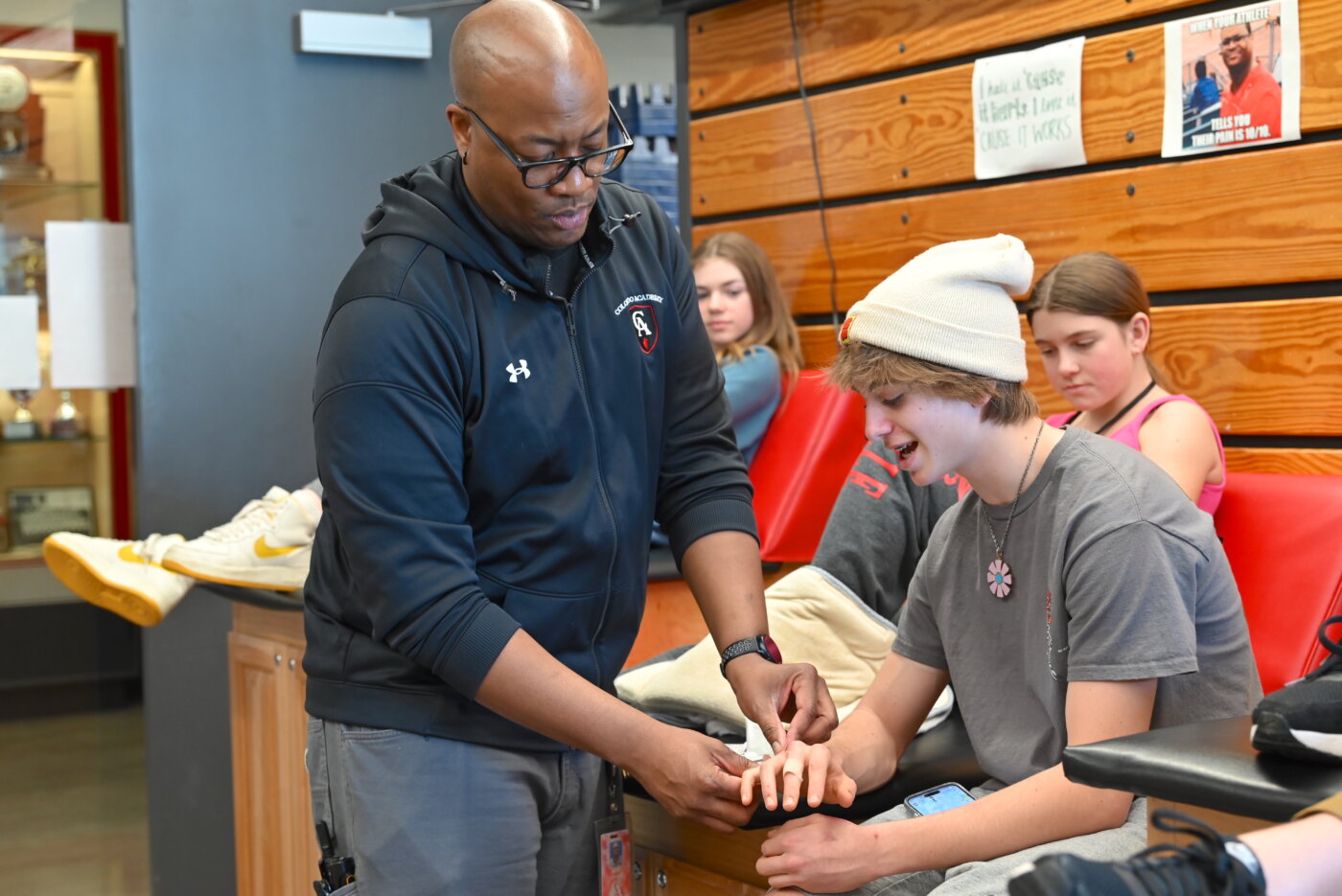
But Grady’s work doesn’t stop at diagnosing and healing: Whether he’s performing a soft-tissue massage or working on range-of-motion exercises, Grady is always trying to educate his students about their bodies.
“When kids are on my table, it’s almost a classroom session. If I’m taking them through a motion, I’m also explaining what body parts are involved, educating them on how to move properly, and helping them understand why they got injured.” Especially with Middle Schoolers, Grady notes, whose bodies change so rapidly, sports offer incredible teachable moments. “This is really a learning space—I’m actively educating students every day.”
Such dedication pays off in a big way when he sees a former patient back on the field looking strong and healthy, able to enjoy the sport that they love. “That’s what holds the most power over me day to day: when mom or dad comes over to me and thanks me for helping their child get healthy, when maybe the family doctor couldn’t figure it out. Seeing kids enjoy their time here is better than any championship ring.”
Kids for the win
Holiday cards displayed on the wall beside Kirk’s desk in the Strength and Conditioning Center prove that caring connections with students and their grateful families matter more than almost anything else—and that what Kirk and his colleagues provide goes well beyond a workout or an ankle wrap.
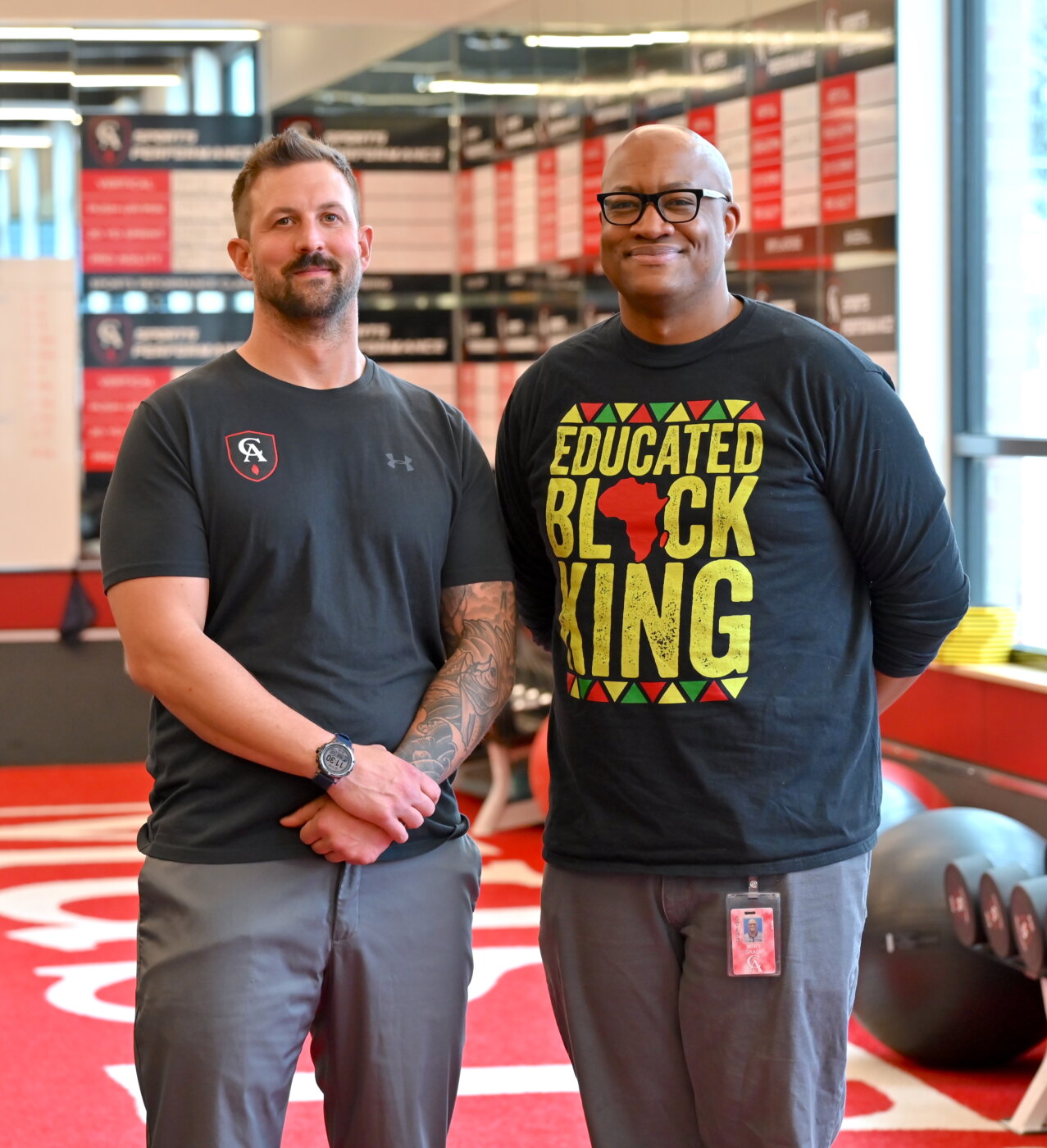
“I think in some ways, our society is losing track of the value of free-form play and exercise,” Kirk observes. “Unstructured physical outlets are so important, especially as you move to the Middle or Upper School and the academic expectations multiply. You can go look at studies that show physical activity—an elevated heart rate—increases cognitive function by a huge margin. So making space for strength and conditioning in school isn’t taking away from other areas. If anything, it’s helping students perform better across the board.”
Agrees Grady, “I tell my students all the time, I will go to battle with anybody when it comes to their well-being. Who are we here to serve? The answer is the kids—not the coaches, not even the parents. I understand the importance of getting the wins, but my career is about making sure these children are healthy.”
Grady notes that a minuscule percentage of high school athletes will ever compete at higher levels—“The reality of what it takes to become an ‘elite’ athlete is beyond anything they’ve ever experienced.” So why think of that as the goal?
Instead, as Kirk argues, “A student could come in here and bench press five pounds for an entire trimester. And if they’re comfortable and confident doing that, if they know the difference between a barbell and a dumbbell, and if they grasp the proper movement patterns for the exercise they’re doing—then that’s a win.”
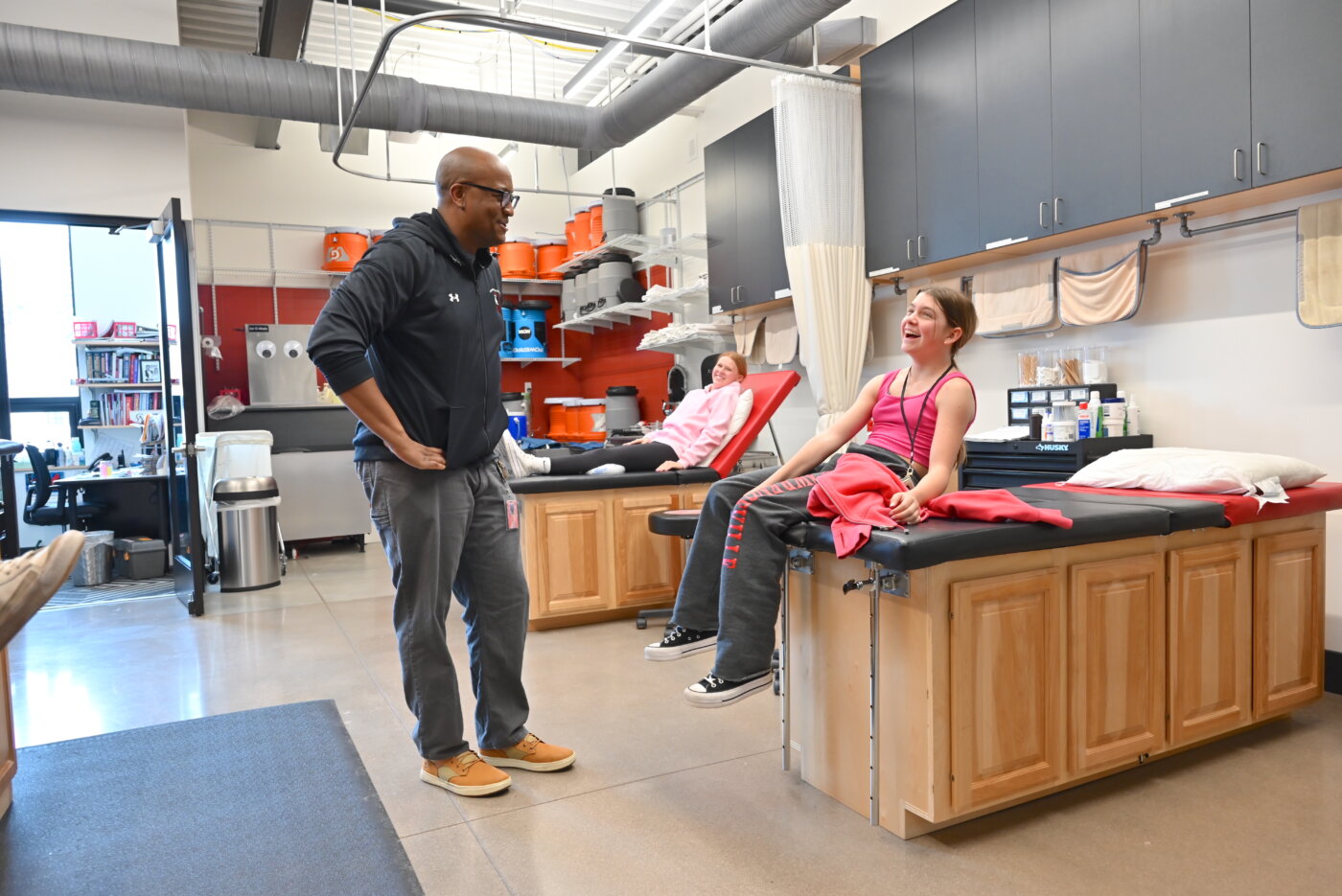
Stop into the Sports Medicine and Strength and Conditioning Center on a busy day, and there are sure to be students there looking to Kirk, Grady, and Griswold for their own win: guidance, care, encouragement, a sympathetic ear, reassurance. These are indeed safe spaces, as Kirk explains, where young people get to spend a few moments tuning into their growing bodies and savoring the knowledge that every day, they’re getting better, stronger, and healthier.
In an era when news reports and science journals continually cite rising rates of anxiety, attention issues, and depression among children and teens, educating students about their health and fitness couldn’t be a more urgent priority. “It’s great to see this program growing so fast,” says Kirk. “It’s great to see kids happy, eager to be part of it and engage with each other.”
Adds Grady, “Being able to support our kids in spaces like these is a dream.”
